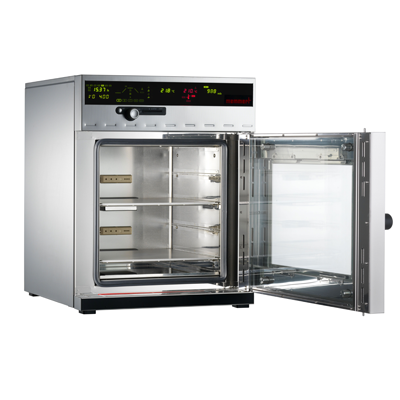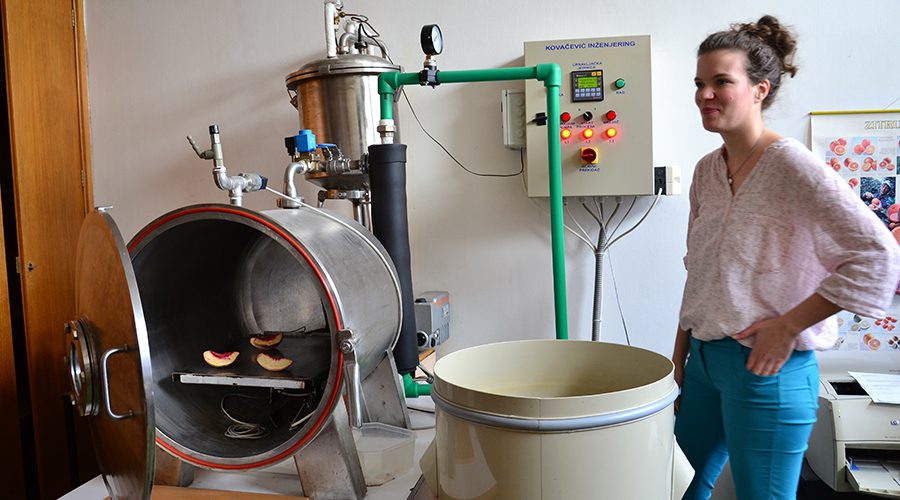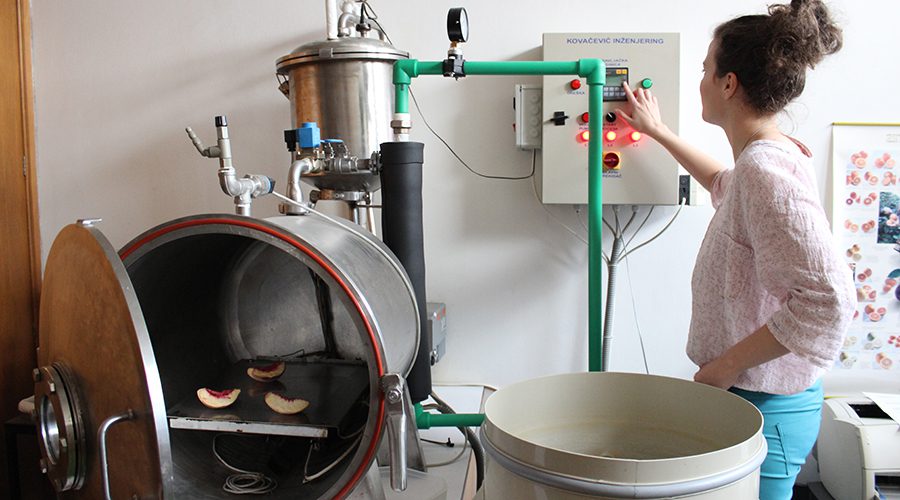Drying of fruit and vegetables
 Drying is the oldest way of food preservation and today is also one of the most important techniques for preservation of nutritional and biological properties of fruits and vegetables. Dried food take much less storage space and also have longer shelf-life in comparison to fresh or frozen fruits and vegetables.
Drying is the oldest way of food preservation and today is also one of the most important techniques for preservation of nutritional and biological properties of fruits and vegetables. Dried food take much less storage space and also have longer shelf-life in comparison to fresh or frozen fruits and vegetables.
Convective drying with hot air is commonly used type of drying. Drying facilities that are currently used in Serbia for drying fruits and vegetables work on the principle of convective heat transfer and have a lot of technical and technological deficiencies. High energy consumption, a bad influence on the quality of the dried product and pollution of the environment generates the need for using vacuum as a supplement to the drying process.
In recent years vacuum drying has been used as a suitable method for obtaining high-quality dried products. Lower pressure used in vacuum drying process can additionally shorten the drying time because lowered pressure induces faster evaporation of water from the material at reduced temperature, which directly influences the good quality of dried products. These conditions of vacuum drying process allow drying of thermal sensitive types of fruits and vegetables and reduce negative chemical reactions which support preserving important bioactive compounds during dehydration process.
Another step further from vacuum drying in term of food quality is freeze-drying or lyophilization. Lyophilization is based on sublimation of water from frozen product that results in high-quality of dehydrated products due to the low temperatures and absence of liquid water in the process. Although lyophilization might present much better type of drying in sense of obtaining high-quality of dehydrated products, it is not commonly used in the food industry because of the high drying costs, low-efficiency, and high energy-consuming process.
Considering the growing interest of consumers for food quality and safety, development of vacuum drying techniques provides an opportunity to satisfy the consumer with this type of product. At the same time, use of drying technique without combustion is very important for the food industry because that way they are approaching green technology. This directly impacts the reduction of environmental taxes and contributes to the environmental preservation.


